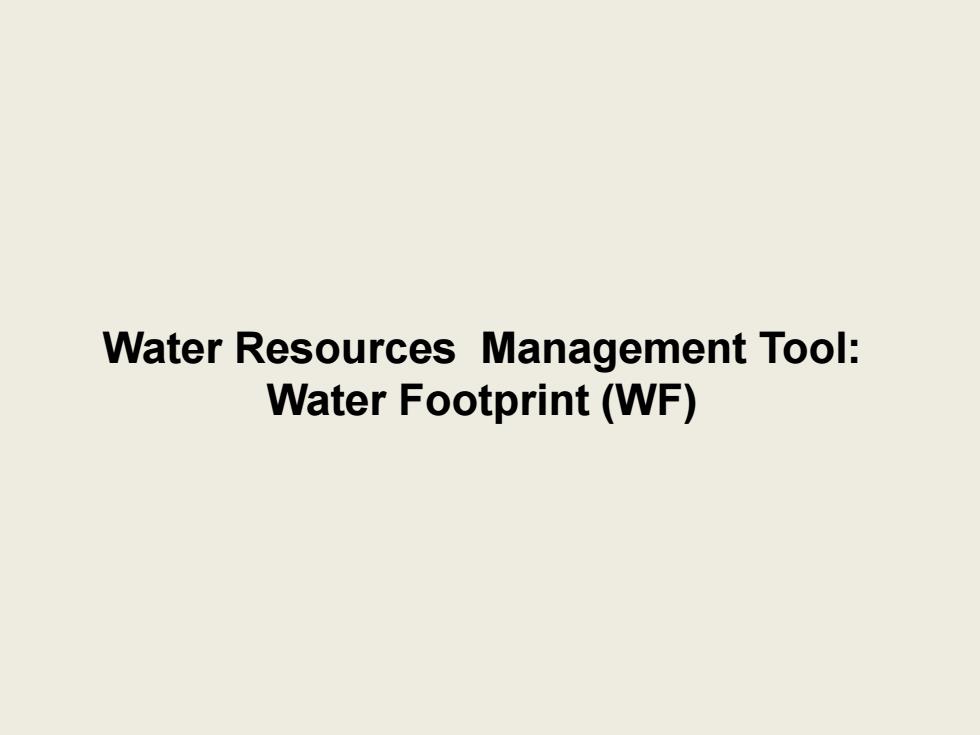
Water Resources Management Tool: Water Footprint (WF)
Water Resources Management Tool: Water Footprint (WF)

Outline -Concept of water footprint -The water footprint of a product -The water footprint of a nation -The water footprint of a business -Global water footprint -Groundwater footprint -From concept to practice
–Concept of water footprint –The water footprint of a product –The water footprint of a nation –The water footprint of a business –Global water footprint –Groundwater footprint –From concept to practice Outline
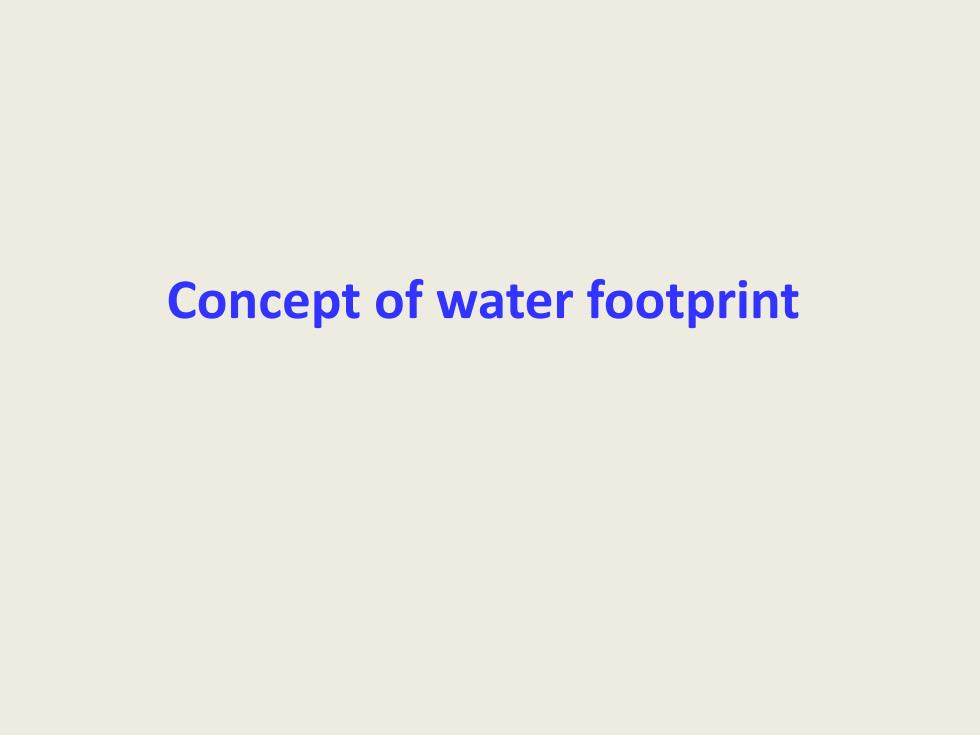
Concept of water footprint
Concept of water footprint
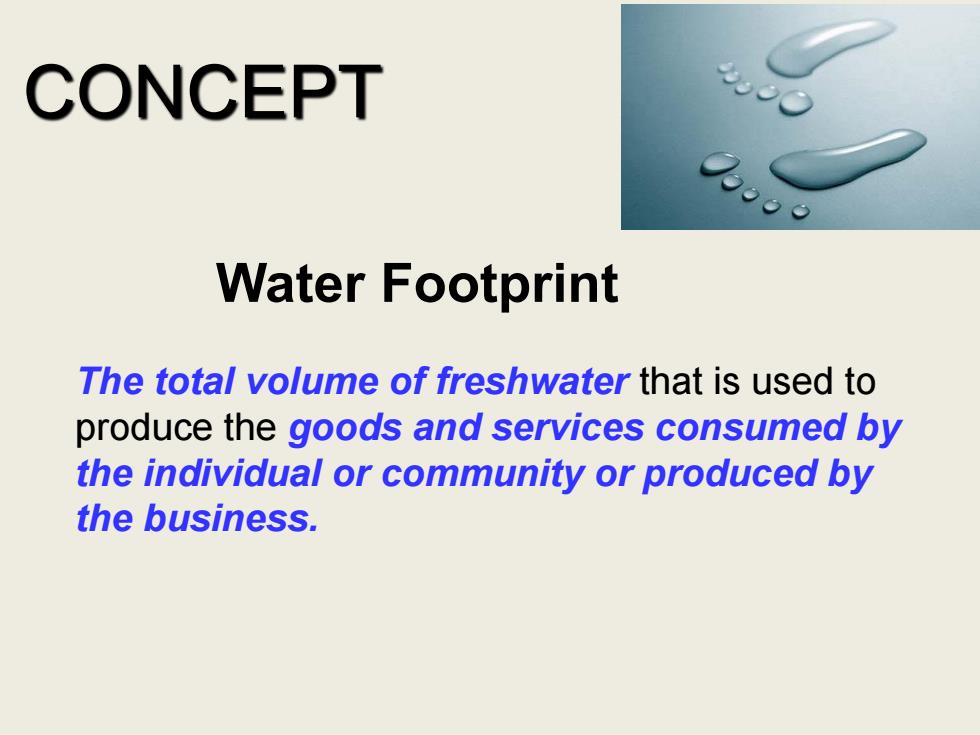
CONCEPT Water Footprint The total volume of freshwater that is used to produce the goods and services consumed by the individual or community or produced by the business
CONCEPT Water Footprint The total volume of freshwater that is used to produce the goods and services consumed by the individual or community or produced by the business
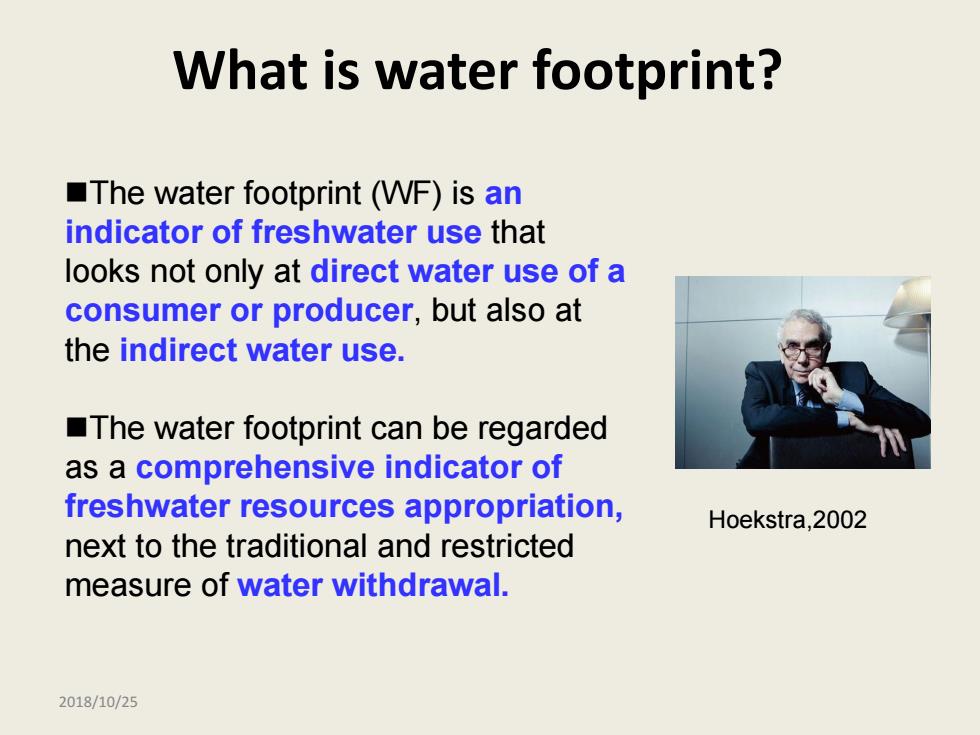
What is water footprint? The water footprint(WF)is an indicator of freshwater use that looks not only at direct water use of a consumer or producer,but also at the indirect water use. The water footprint can be regarded as a comprehensive indicator of freshwater resources appropriation, Hoekstra,2002 next to the traditional and restricted measure of water withdrawal. 2018/10/25
What is water footprint? 2018/10/25 ◼The water footprint (WF) is an indicator of freshwater use that looks not only at direct water use of a consumer or producer, but also at the indirect water use. ◼The water footprint can be regarded as a comprehensive indicator of freshwater resources appropriation, next to the traditional and restricted measure of water withdrawal. Hoekstra,2002
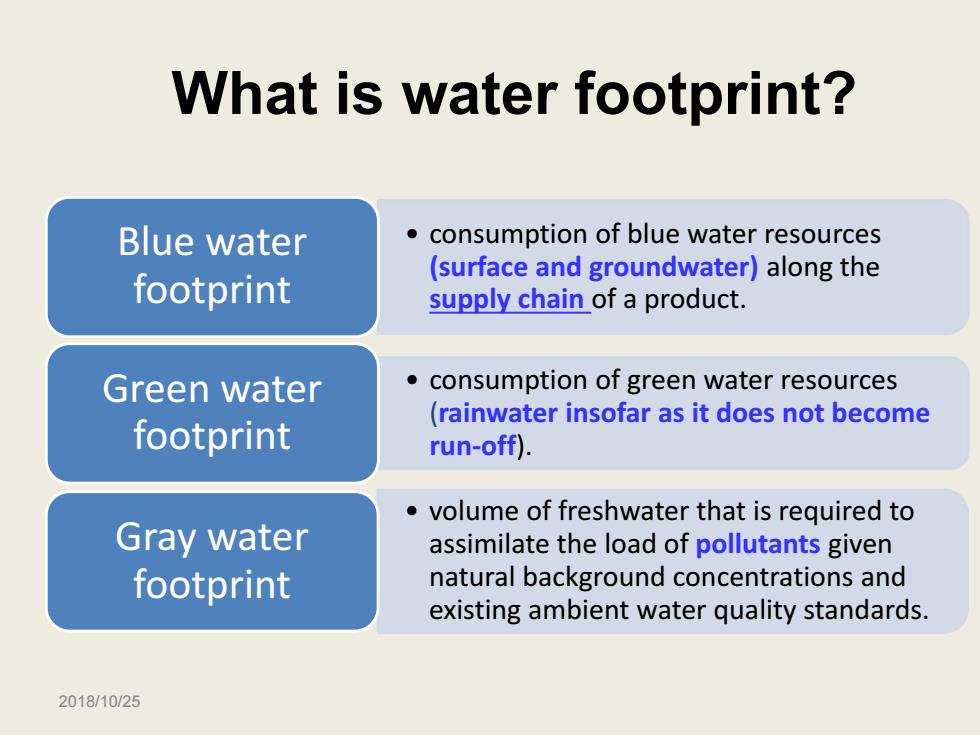
What is water footprint? Blue water consumption of blue water resources footprint (surface and groundwater)along the supply chain of a product. Green water consumption of green water resources (rainwater insofar as it does not become footprint run-off). volume of freshwater that is required to Gray water assimilate the load of pollutants given footprint natural background concentrations and existing ambient water quality standards. 2018/10/25
What is water footprint? 2018/10/25 • consumption of blue water resources (surface and groundwater) along the supply chain of a product. Blue water footprint • consumption of green water resources (rainwater insofar as it does not become run-off). Green water footprint • volume of freshwater that is required to assimilate the load of pollutants given natural background concentrations and existing ambient water quality standards. Gray water footprint
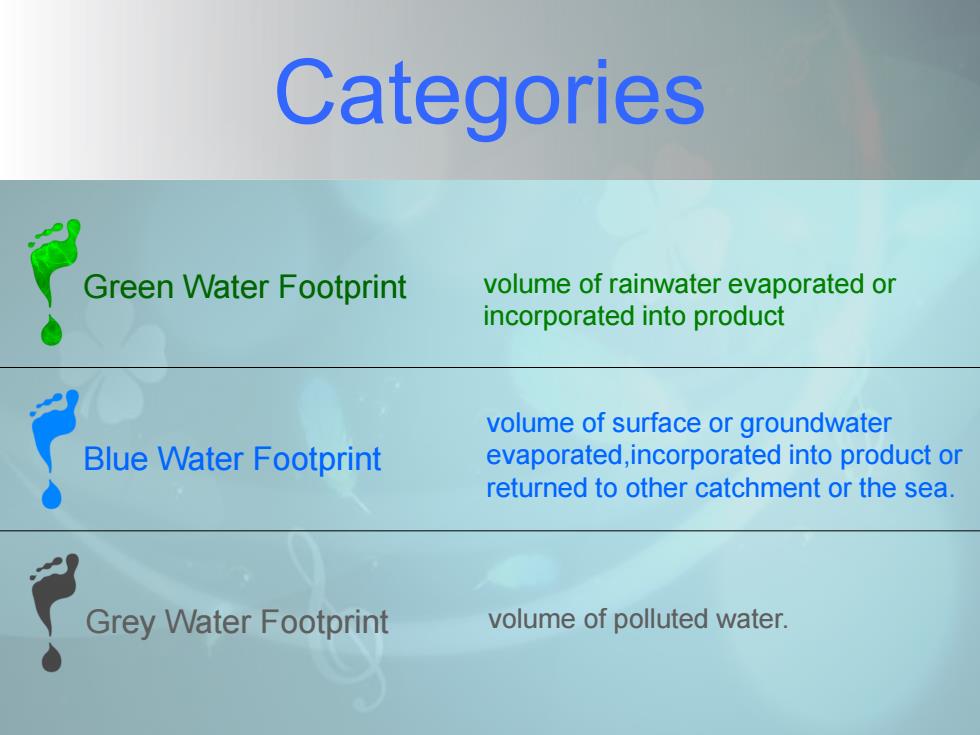
Categories Green Water Footprint volume of rainwater evaporated or incorporated into product volume of surface or groundwater Blue Water Footprint evaporated,incorporated into product or returned to other catchment or the sea. Grey Water Footprint volume of polluted water
Categories Green Water Footprint Blue Water Footprint Grey Water Footprint volume of polluted water. volume of rainwater evaporated or incorporated into product volume of surface or groundwater evaporated,incorporated into product or returned to other catchment or the sea
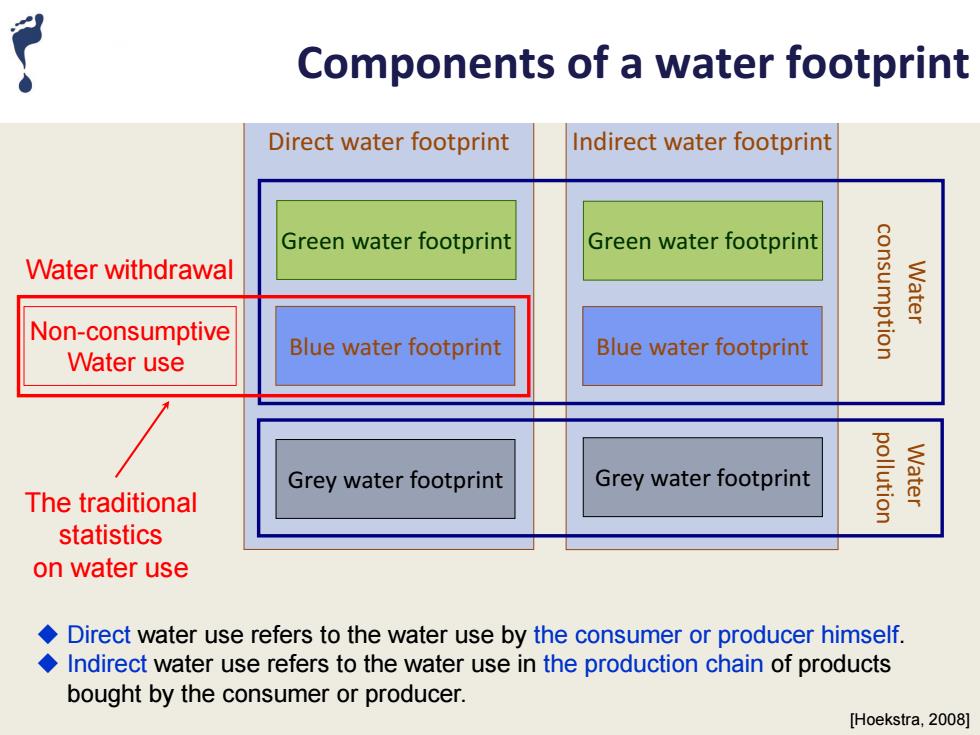
Components of a water footprint Direct water footprint Indirect water footprint Green water footprint Green water footprint Water withdrawal consumption Water Non-consumptive Blue water footprint Blue water footprint Water use Grey water footprint Grey water footprint pollution Water The traditional statistics on water use Direct water use refers to the water use by the consumer or producer himself. Indirect water use refers to the water use in the production chain of products bought by the consumer or producer. [Hoekstra,2008]
Direct water footprint Indirect water footprint Green water footprint Green water footprint Blue water footprint Blue water footprint Grey water footprint Grey water footprint Water consumption Water pollution [Hoekstra, 2008] Non-consumptive Water use Water withdrawal The traditional statistics on water use Components of a water footprint ◆ Direct water use refers to the water use by the consumer or producer himself. ◆ Indirect water use refers to the water use in the production chain of products bought by the consumer or producer
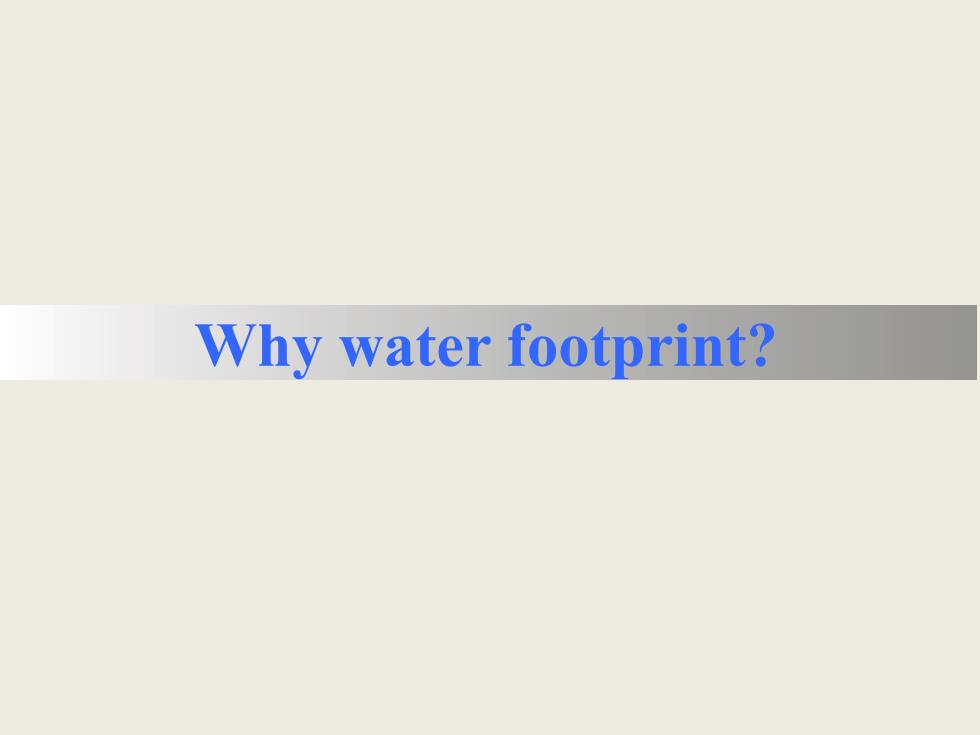
Why water footprint?
Why water footprint?

Shrinking Aral Sea ◆ The water footprint can make a link between consumption in one place and impacts on water systems elsewhere. ◆ Water use for cotton production can have major impacts on the environment. Particularly intensive irrigation schemes can have disastrous effects,as shown for example in the case of Uzbekistan and the desiccation of the Aral Sea. Shrinking Aral Sea
◆ The water footprint can make a link between consumption in one place and impacts on water systems elsewhere. ◆ Water use for cotton production can have major impacts on the environment. ◆ Particularly intensive irrigation schemes can have disastrous effects, as shown for example in the case of Uzbekistan and the desiccation of the Aral Sea. Shrinking Aral Sea Shrinking Aral Sea